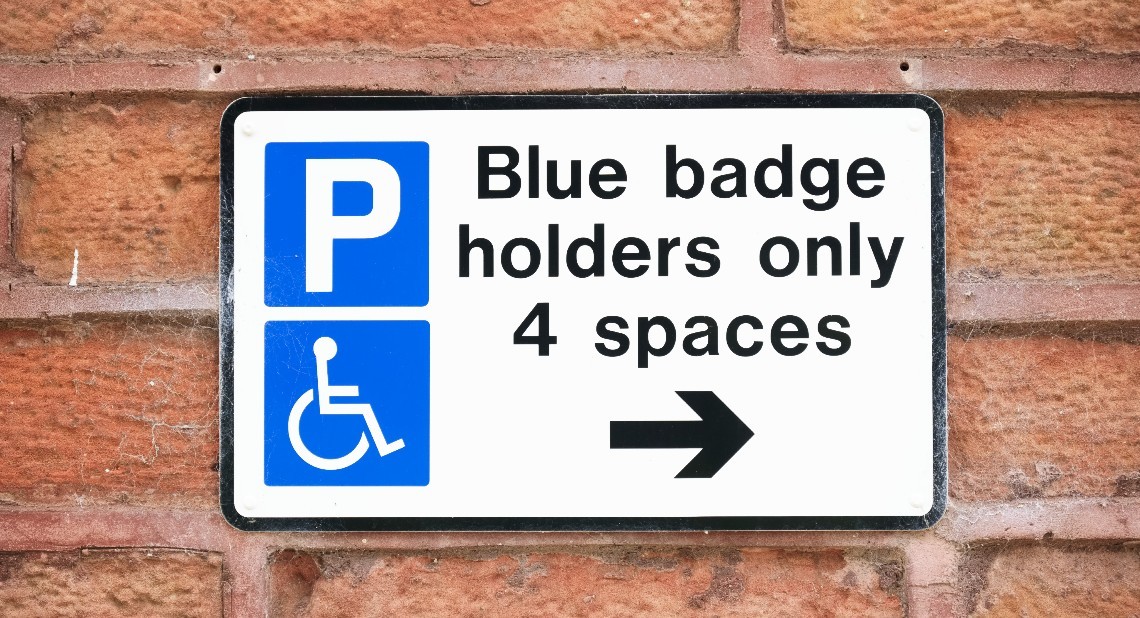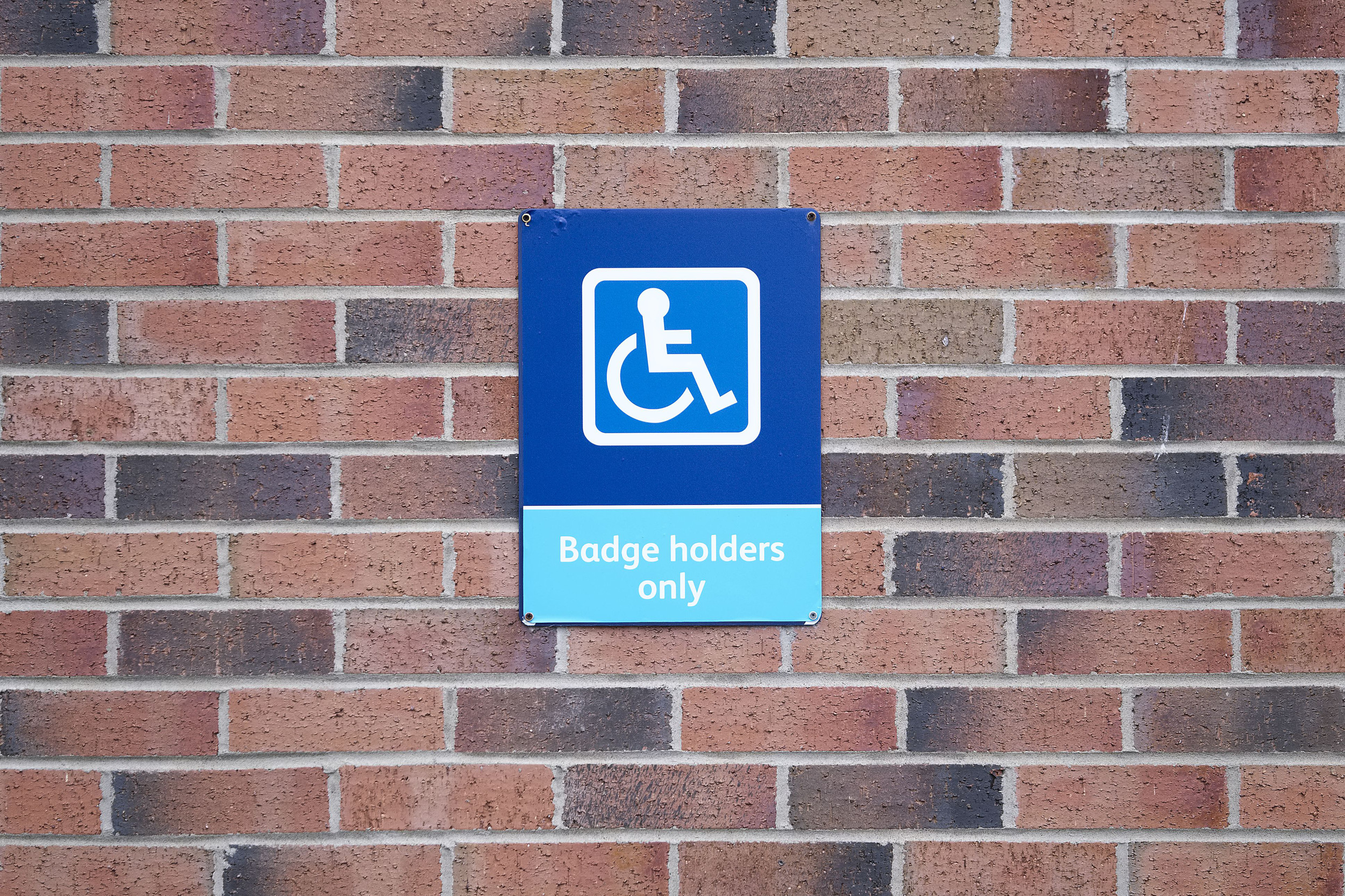If you have a Blue Badge, you can often park closer to your destination, but the rules can vary. We’ve pulled together some tips to help you make the most of your Blue Badge, wherever you’re going.
We know many of you may be eligible for a Blue Badge, so here’s a quick guide to help you get the most from it. Having a Blue Badge allows you to park in many places that others cannot, often for longer periods. However, it’s important to know what the rules are for using your Blue Badge, so that you know you’re using it properly. Whether it’s a local council car park, a private car park, or on a public road, the rules can vary across the UK.
By following these tips and understanding how to use your Blue Badge properly, you can have a better driving experience.
Plus, if you lease a vehicle through the Motability Scheme, you’ll also enjoy the benefits of an all-inclusive package. We’ll cover your insurance, servicing and breakdown.
- On-street parking with your Blue Badge
- Off-street parking with your Blue Badge
- Rules for using your Blue Badge in London
- Make sure your blue badge is easy to see
- Remember to renew your Blue Badge
- Rules for using your Blue Badge to park in Europe
- Your Blue Badge is just for you
Your Blue Badge lets you park in more places, but not everywhere. It’s mainly for use on public roads, not private ones.
For example, you can park for free in on-street pay-and-display bays and on single or double yellow lines for up to three hours, unless there are loading restrictions. In Scotland, there is no time limit.
You can also park in disabled parking bays marked with a blue wheelchair symbol for as long as you need, unless signs say otherwise.
Interested in joining the Scheme?
Join over 860,000 customers who already enjoy the benefits of an all-inclusive lease package through the Scheme.
We have a range of cars, Wheelchair Accessible Vehicles (WAVs), scooters and powered wheelchairs to choose from.
Not sure if you can park somewhere? You can check your local council’s rules online. There’s a tool on the UK Government website, just pop in a postcode and it’ll take you to the right page.
Rules can vary depending on where you live, so it’s also worth checking the specific guidance for England, Scotland, Wales, and Northern Ireland.
Blue Badges are mainly for on-street parking. That means you’re not automatically entitled to free parking in private car parks, like the ones at shopping centres, hospitals or supermarkets.
Some of these car parks do offer free or dedicated spaces for disabled people, but the rules vary. You’ll usually need to clearly display your Blue Badge. So, it’s always best to check the signs before you park. If you do not, you could risk a fine.
Motability Scheme customer Helen found this out the hard way:
In the early days of having a Blue Badge, I parked in an off-street pay and display car park. I wrongly assumed it was free, like on-street parking. When I got back to my car, I saw a parking ticket on the windscreen. I’d made a mistake. It completely depends on the car park, so always check the signs.
Helen also shared that pay and display machines are not always easy to use. But being able to pay by phone has made things much simpler.
London’s a busy place, and some boroughs have their own rules for Blue Badge parking. These might be different to what you’re used to elsewhere in the UK.
Here’s what to keep in mind:
- Check local rules: Some areas do not let you park on yellow lines, and you may need a Red Badge to park in the City of London
- Use your parking clock: If there’s a time limit, make sure your clock is clearly displayed
- No pavement parking: You cannot park on pavements in London unless signs say it’s allowed
- Keep things safe: Do not park where you might block the pavement or hold up traffic
If you live or work in the City of London, you might be able to get a Red Badge. This gives you more parking options in that area. You can check the City of London website for details.
It’s simple, but important, your Blue Badge must be clearly displayed every time you park.
Here’s how to do it right:
- Put your badge on the dashboard
- Make sure it’s facing up, with the hologram visible through the windscreen
- You do not need to show the photo side
- If someone else is putting the badge out for you, check they know how to display it properly
If your badge is not shown correctly, you could get a parking fine or a penalty charge notice.
Most Blue Badges last up to three years. You’ll need to reapply before yours runs out.
Motability Scheme customer Sarah knows how easy it is to forget. She only remembered to renew her badge three weeks before it expired and found it stressful. Now, she sets a reminder well in advance:
“I’ve made sure that I will not forget next time by putting the date in my phone. I schedule everything in my phone, such as hospital appointments, birthdays, everything. So, two months before my Blue Badge permit is due to expire, I have blocked the whole month out in red to remind me that I need to renew it.”
You can apply or renew your Blue Badge on the UK Government website.
Here’s what you’ll need:
- A recent digital photo of your head and shoulders
- Proof of identity, such as a passport or driving licence
- Proof of address, such as a Council tax bill
- Proof of any qualifying benefits (if you receive them)
- Your National Insurance Number (if you have one)
- Details of your current Blue Badge (if you already have one)
If you’re travelling in Europe, then your Blue Badge gives you special parking concessions in some countries.
It’s worth checking the UK Government website before you travel, so you can find a list of countries that accept it and find out what the rules are.
You can only use your Blue Badge if you’re in the car, whether you’re driving, a passenger, or being picked up or dropped off.
No one else should use it on your behalf, even for a quick trip to the shops. That’s classed as misuse, and it’s a criminal offence. You could be fined £1,000 and have your badge taken away.
Feel confident when you park
Knowing how to use your Blue Badge properly can make every journey easier. By following these tips, you can park with confidence and get where you need to be.
At the Motability Scheme, we’re here to support confident, independent travel for all. That includes providing simple, practical guidance so you can make the most of your Blue Badge, wherever your journey takes you.
Related articles
How to spot parking scams and what to do
![]()







